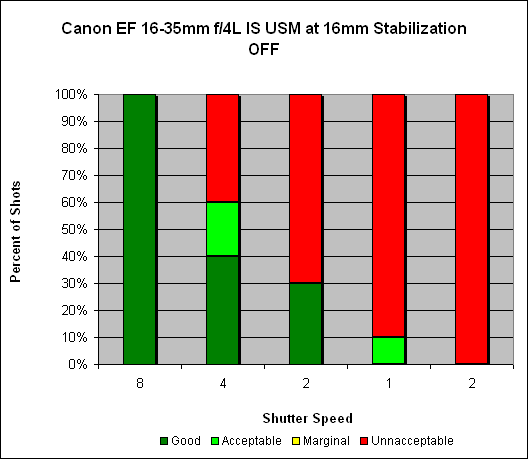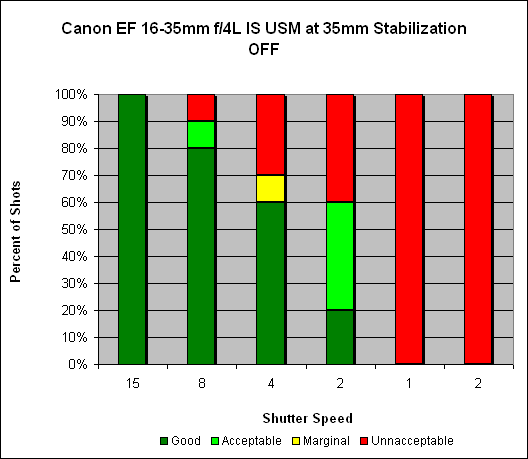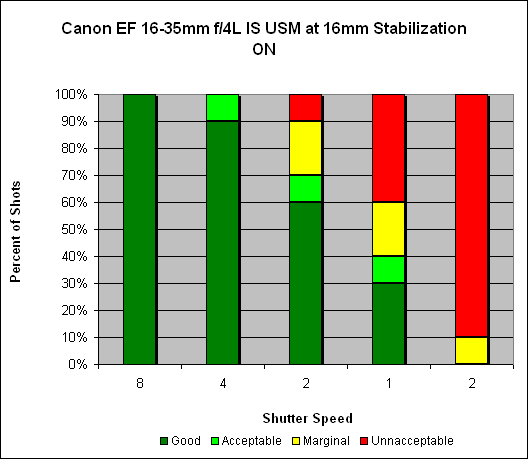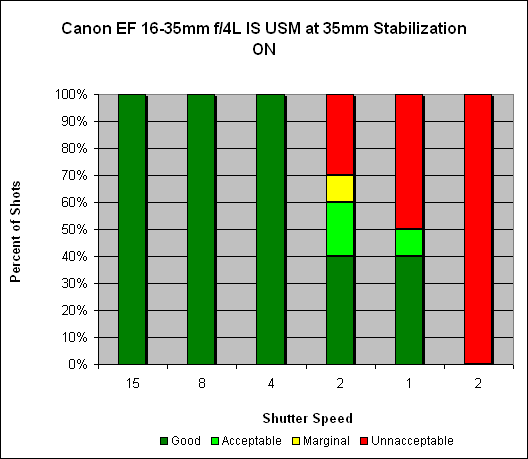Most people tend to think of image stabilization as being mainly for telephoto lenses. While it's true that their longer focal lengths tend to magnify the effects of camera shake, image stabilization can provide a very useful assist at wider angle focal lengths as well; anyone who's ever tried to blur the image of a waterfall, while keeping the surrounding landscape tack-sharp knows exactly what I'm talking about.
At 16mm, it isn't surprising that we don't see a huge improvement in hand-holding stability: wide angle lenses don't see much of a benefit in image stabilization, as compared to telephoto. Looking at the test chart, we see maybe about a half-stop of improvement: it's already pretty easy to get sharp images at slow shutter speeds (we see 100% sharp images at 1/8 of a second, and 50% sharp at 1/4; with IS engaged, that turns into almost 100% sharp at 1/4 of a second).
 |
| Mouse over this chart to show results with IS activated. |
Zoomed in to 35mm, it's a bit more useful to have image stabilization engaged. When it's not activated, we can see Rob got 100% sharp images at 1/15 of a second; engaging IS, he was able to get 100% sharp images as slow as 1/4 of a second, or an improvement of 2 stops of hand-holding stability.
 |
| Mouse over this chart to show results with IS activated. |
IS systems tend to provide more benefit to less-stable shooters than very steady ones, so most users will see the same or greater amounts of shake reduction as we measured here. You can read more about our IS test methodology here: SLRgear IS Test Methodology, v2.

